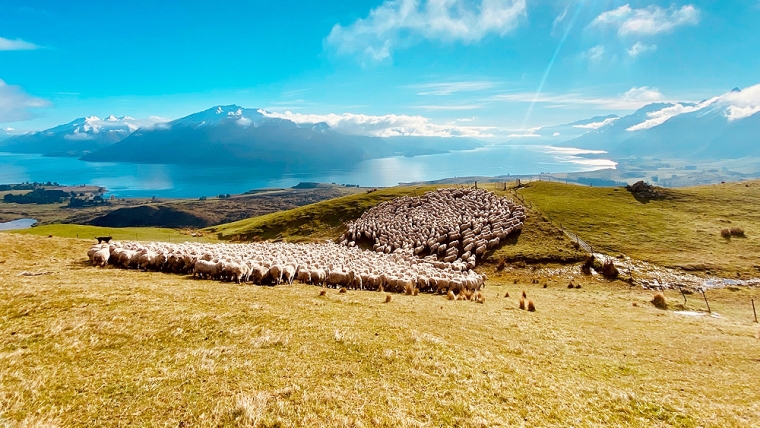
There are concerns the new owners of the Alliance Group could end up paying the same higher-than-needed prices for lambs for their killing chains as their predecessors did.
If this practice continues, it could put intense pressure on the new company’s balance sheet, just as it did with Alliance in successive years.
Alliance’s 4,500 farmer shareholders recently voted to sell 65% of their company to the Irish firm, Dawn Meats, for $270 million, ending the company’s 77-year history as a fully farmer-owned co-op.
This deal happened as the company battled to cope with a $120.8 million before-tax loss in the 2024 financial year and a $97.9 million dollar loss in the 2023 year.
The company subsequently clawed its way back to a slim net profit before tax of $24.6 million for the 2025 year, just in time to satisfy the company’s new owners.
One of the causes of Alliance’s difficulties – and those of the wider industry - is a gradual decline in the numbers of lambs available to be sent to the works. According to Beef + Lamb NZ (B+LNZ), lamb processing has fallen by 6.4% in the past two years.
This decline in lamb numbers has been aggravated by the practice of some farmers to send breeding ewes to the works to make up the numbers, which worsens the lamb shortage in the subsequent year.
This problem has also led to over-capacity in processing facilities, which the closure of Alliance’s Smithfield plant in Timaru failed to resolve when looked at from an industry-wide point of view.
The impact of this has been to push up the price paid by the meat processing companies for lambs for their killing chains.
While some of this increase will have stemmed from supply problems due to stock shortages, another reason could be the high export prices for meat in the last few years. But a common complaint is that so-called aggregators, or third party suppliers, are compounding the problem. They do this by accumulating large numbers of lambs and presenting them as a job lot to processing companies, which are obliged to pay higher prices to acquire the stock and keep their killing chains busy.
Sometimes, these deals are done by large farmers with a lot of sheep to sell from their extensive farms. But sometimes they are done by entrepreneurs and middlemen who see a chance to take a cut by aggregating the output from several smaller farms, and lifting the price in return for giving the company a large scale supply deal.
“This is one of the reasons why the Alliance got into such a dire position,” says one adamant opponent of the aggregators, David Clark.
“I would hope the new owners see sense and pay a flat, level schedule to everybody.”
Clark is a pastoral and sheep farmer in Mid Canterbury, and he says the stock aggregators were one reason why Alliance had such serious financial trouble.
“They got captured by the interests of the big traders. They were trading thousands of lambs, they were buying the lambs at the sale yards and then selling them back to Alliance, and they had a better deal than the rest of us could get. It was completely against all cooperative principles.”
Clark says in some cases, the aggregators would get 50 cents a kilo more than other farmers got for their stock.
Not all farmers think the aggregators are at fault, however, even if they agree that Alliance procurers ended up paying a high price. They say the aggregators are able to provide a steady flow of animals for plants which are caught short of an adequate supply of animals at a time when they have chains ready to go and workers needing to be paid.
Other farmers admit the aggregators can get paid more than regular farmers, but say this is nothing more than a discount for a bulk purchase.
However Alliance’s new owners deal with this problem, it will probably present a slightly smaller problem to them than it did to the previous owners. In unveiling its latest financial result, the company said it was reducing its processing of sheepmeat relative to beef. Sources say this will bring its beef/sheepmeat ratio closer to industry norms.
1 Comments
It may now be dawning on Dawn that they have inherited and inherent mindset of the industry. In one word - throughput. Alliance’s first plant Lorneville was designed with seven chains, potentially eight. That is a big bucket to fill and so too similarly large works they acquired from the Waitaki and SFM collapses. Simply speaking the ideology was the greater the number processed then the smaller the average unit cost. The whole industry went forward on that premise of numbers regardless of whether or not the “throughput” was in good market form and until the UK, the home country, joined the EEC together with the traditional consumer changing habits it all largely worked. Hence by the mid 1980s NZ’s sheep flock had progressed to around 75mill.

We welcome your comments below. If you are not already registered, please register to comment.
Remember we welcome robust, respectful and insightful debate. We don't welcome abusive or defamatory comments and will de-register those repeatedly making such comments. Our current comment policy is here.